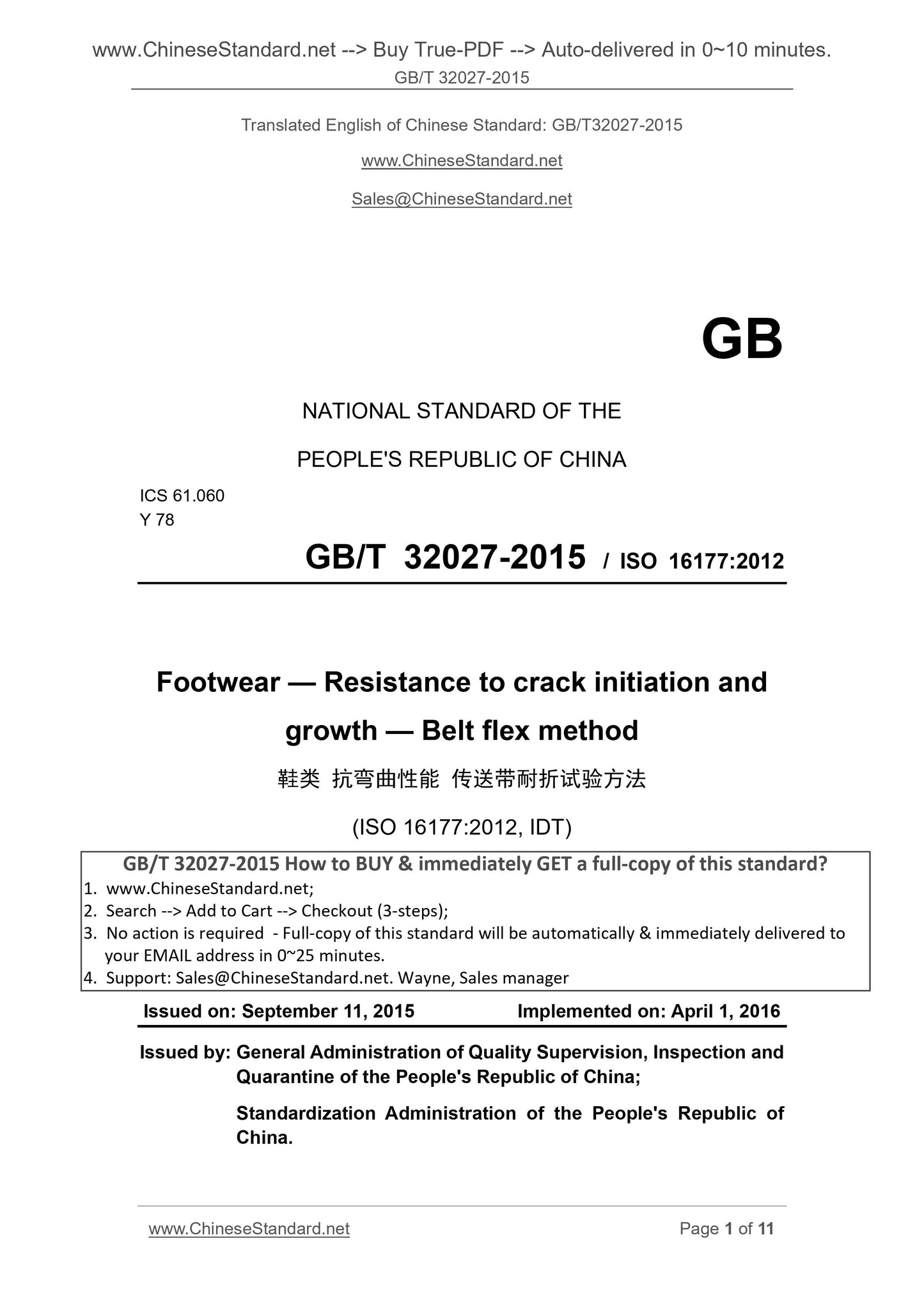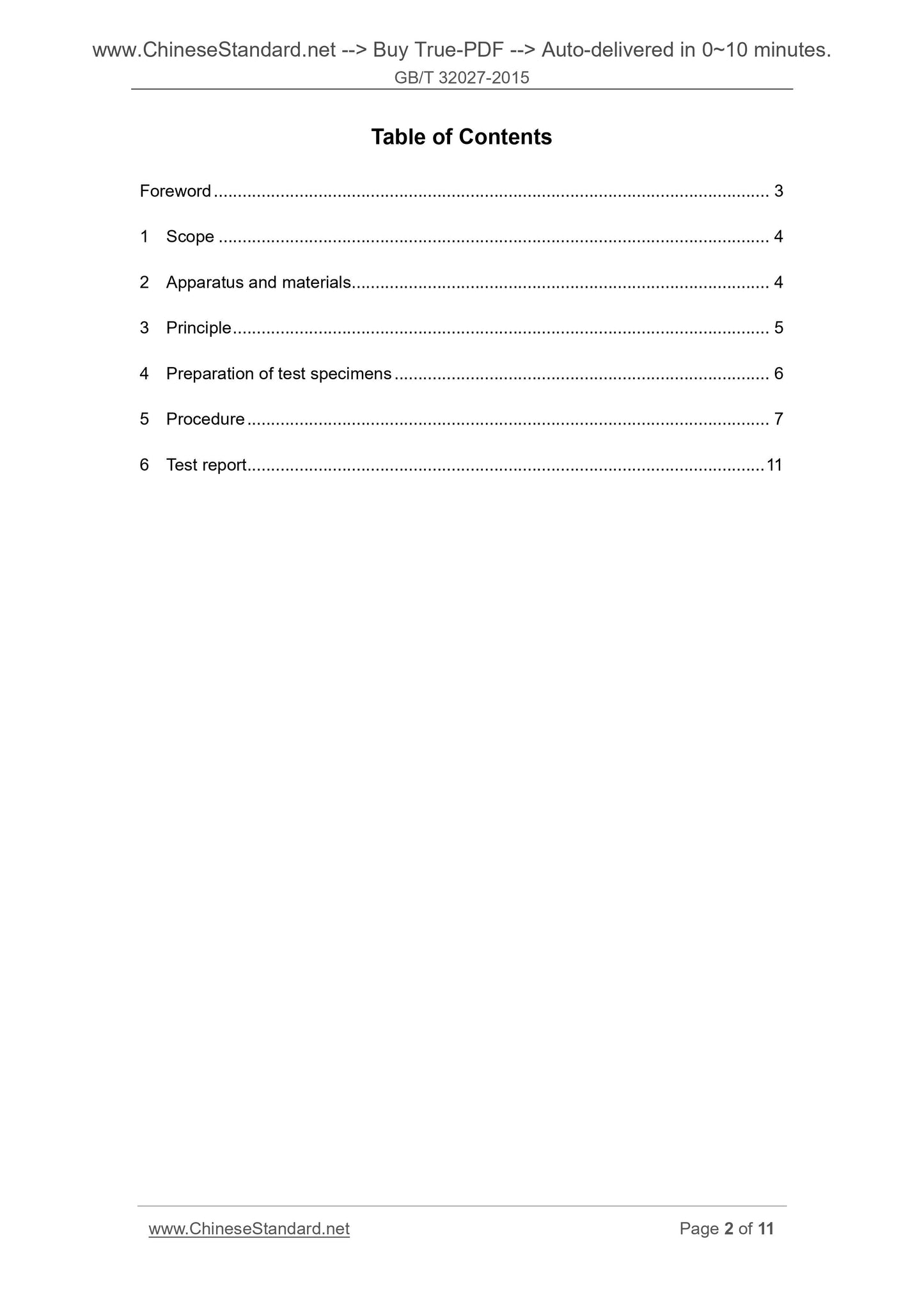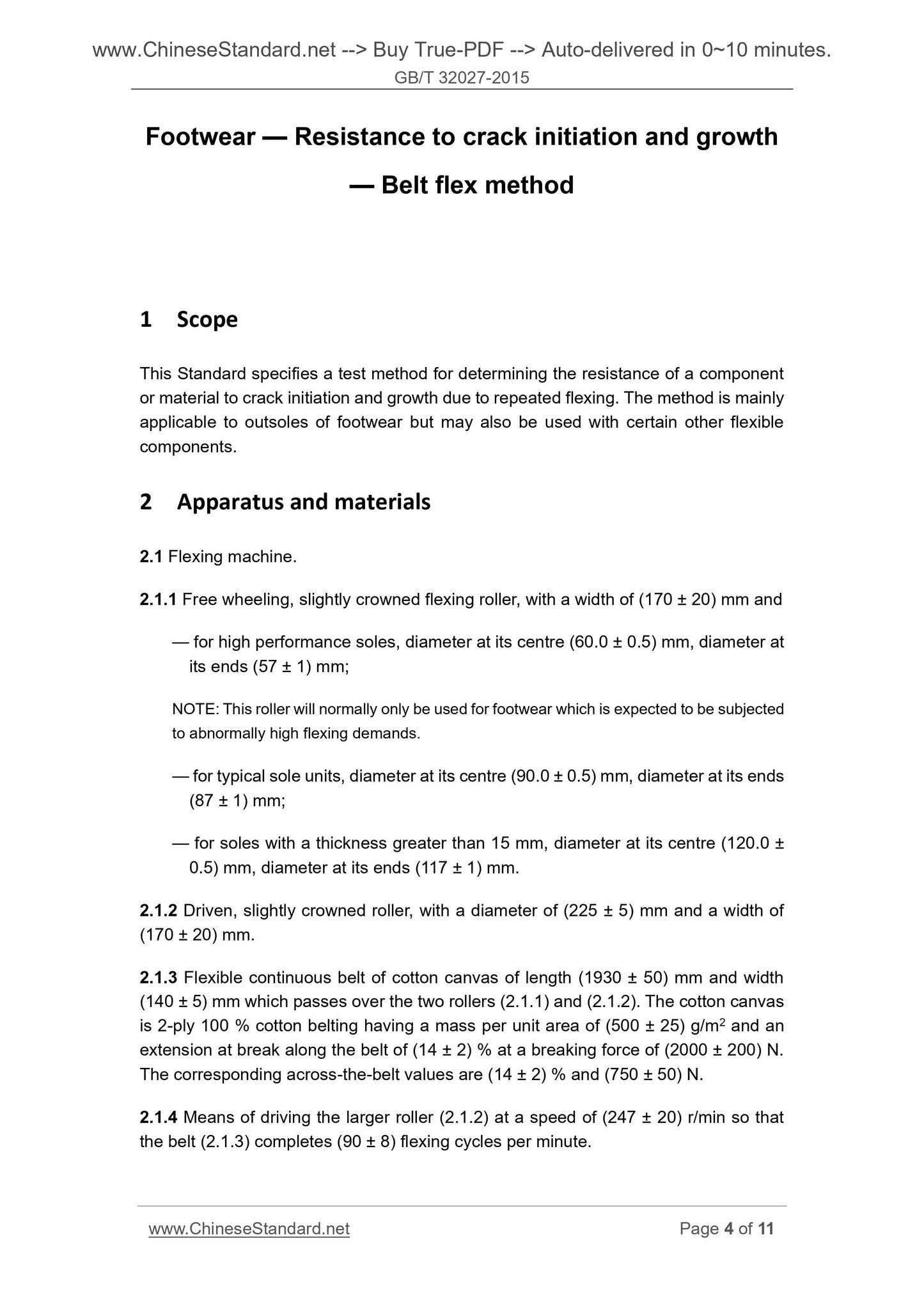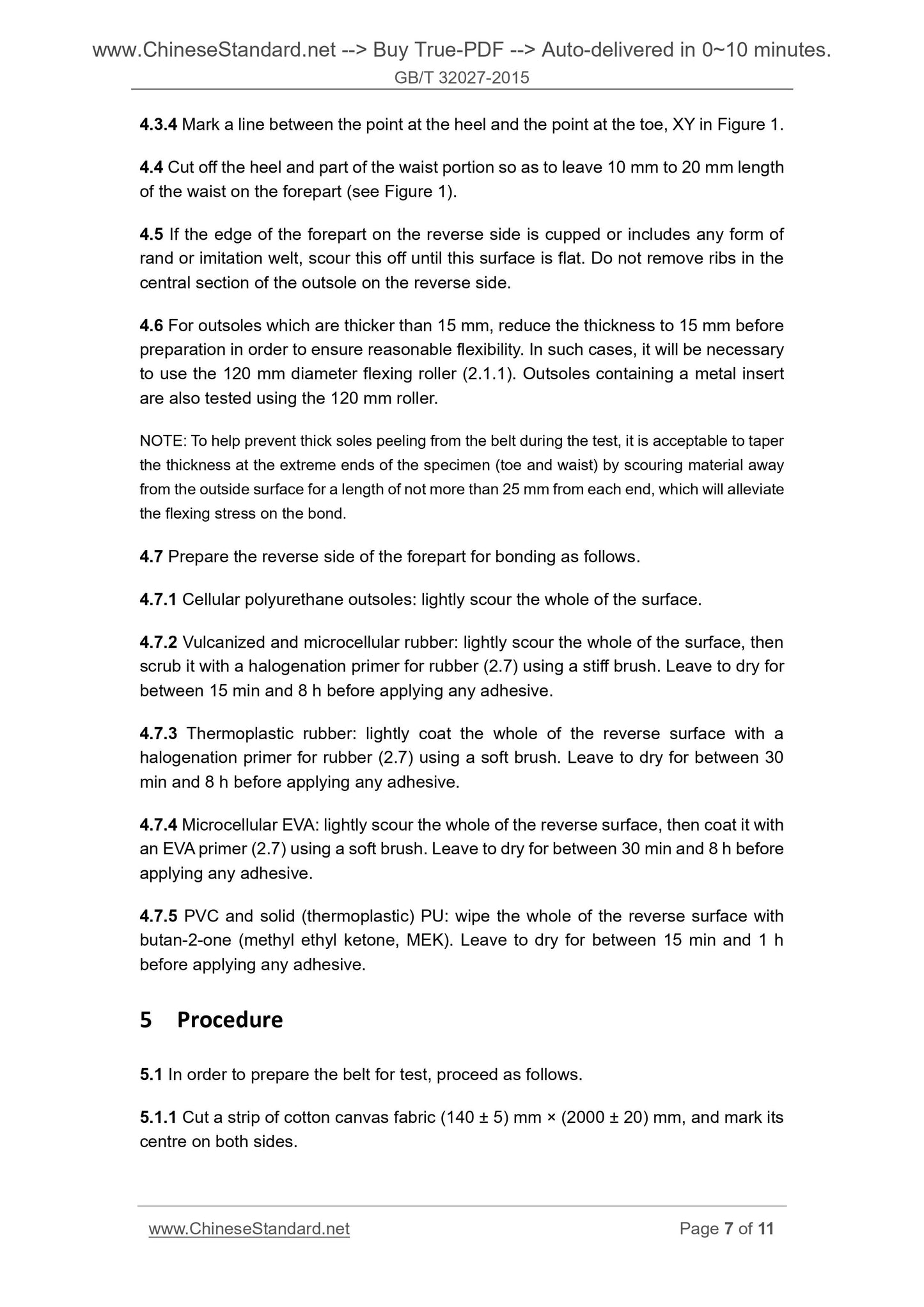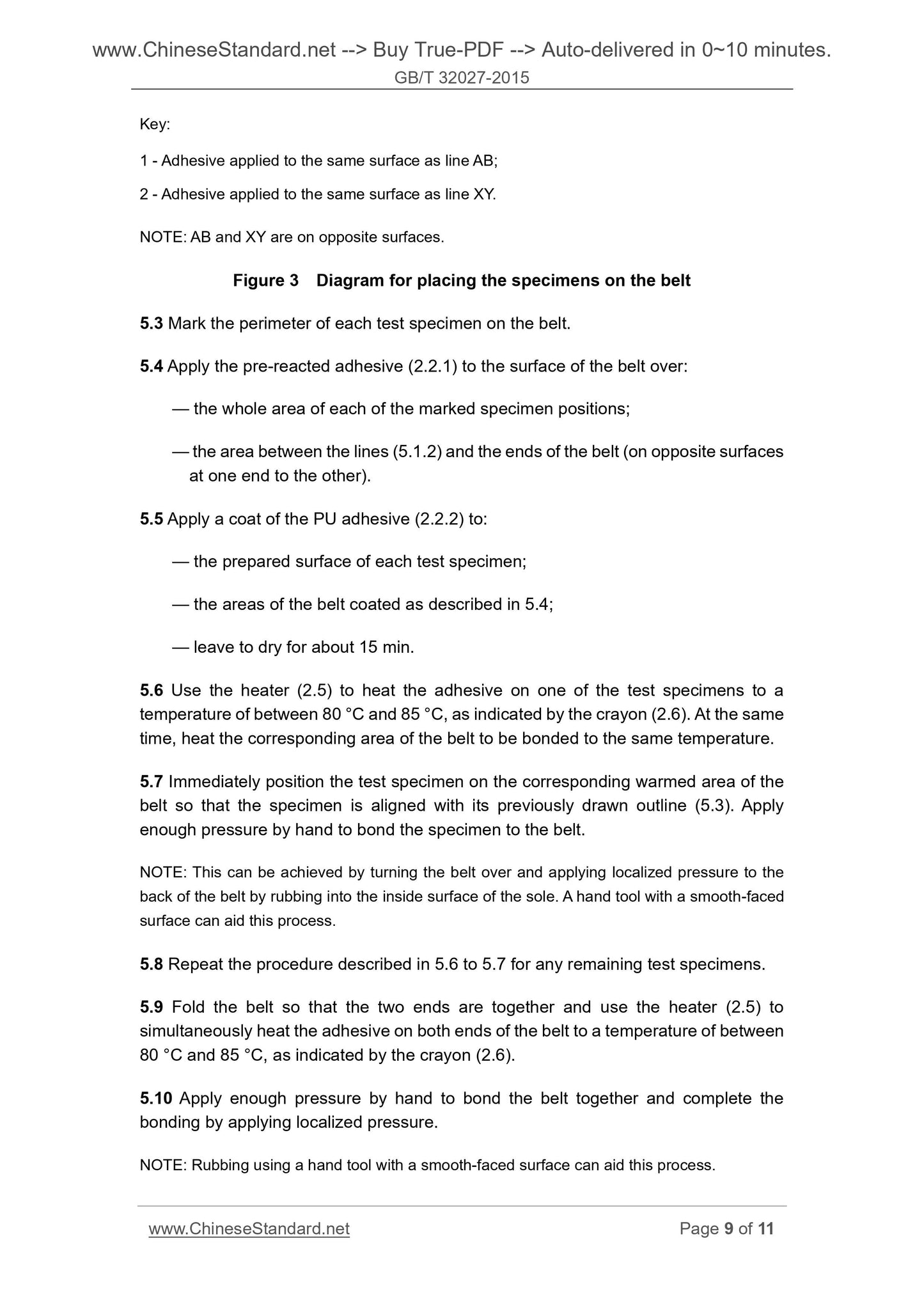1
/
of
5
www.ChineseStandard.us -- Field Test Asia Pte. Ltd.
GB/T 32027-2015 English PDF (GB/T32027-2015)
GB/T 32027-2015 English PDF (GB/T32027-2015)
Regular price
$90.00
Regular price
Sale price
$90.00
Unit price
/
per
Shipping calculated at checkout.
Couldn't load pickup availability
GB/T 32027-2015: Footwear -- Resistance to crack initiation and growth -- Belt flex method
Delivery: 9 seconds. Download (and Email) true-PDF + Invoice.Get Quotation: Click GB/T 32027-2015 (Self-service in 1-minute)
Newer / historical versions: GB/T 32027-2015
Preview True-PDF
Scope
This Standard specifies a test method for determining the resistance of a componentor material to crack initiation and growth due to repeated flexing. The method is mainly
applicable to outsoles of footwear but may also be used with certain other flexible
components.
Basic Data
| Standard ID | GB/T 32027-2015 (GB/T32027-2015) |
| Description (Translated English) | Footwear -- Resistance to crack initiation and growth -- Belt flex method |
| Sector / Industry | National Standard (Recommended) |
| Classification of Chinese Standard | Y78 |
| Classification of International Standard | 61.060 |
| Word Count Estimation | 11,137 |
| Date of Issue | 2015-09-11 |
| Date of Implementation | 2016-04-01 |
| Regulation (derived from) | National Standard Announcement 2015 No.25 |
| Issuing agency(ies) | General Administration of Quality Supervision, Inspection and Quarantine of the People's Republic of China, Standardization Administration of the People's Republic of China |
Share
